Each year, the California Academy of Sciences’ renowned BigPicture Photography Competition celebrates some of the world’s best photographers and the year’s most striking images. Judged by an esteemed panel of nature and conservation photography experts, including Suzi Eszterhas, Tony Wu, and bioGraphic contributing photo editor Sophie Stafford, the competition’s winning images and finalists highlight Earth’s biodiversity and illustrate the many threats that our planet faces. Each photo, in its own way, inspires viewers to protect and conserve the remarkable diversity of life on Earth.
Below, are a few of the winners. You can see more photos on the bioGraphic site.
Hold on Tight by Mathieu Foulquié
Aquatic Life Finalist

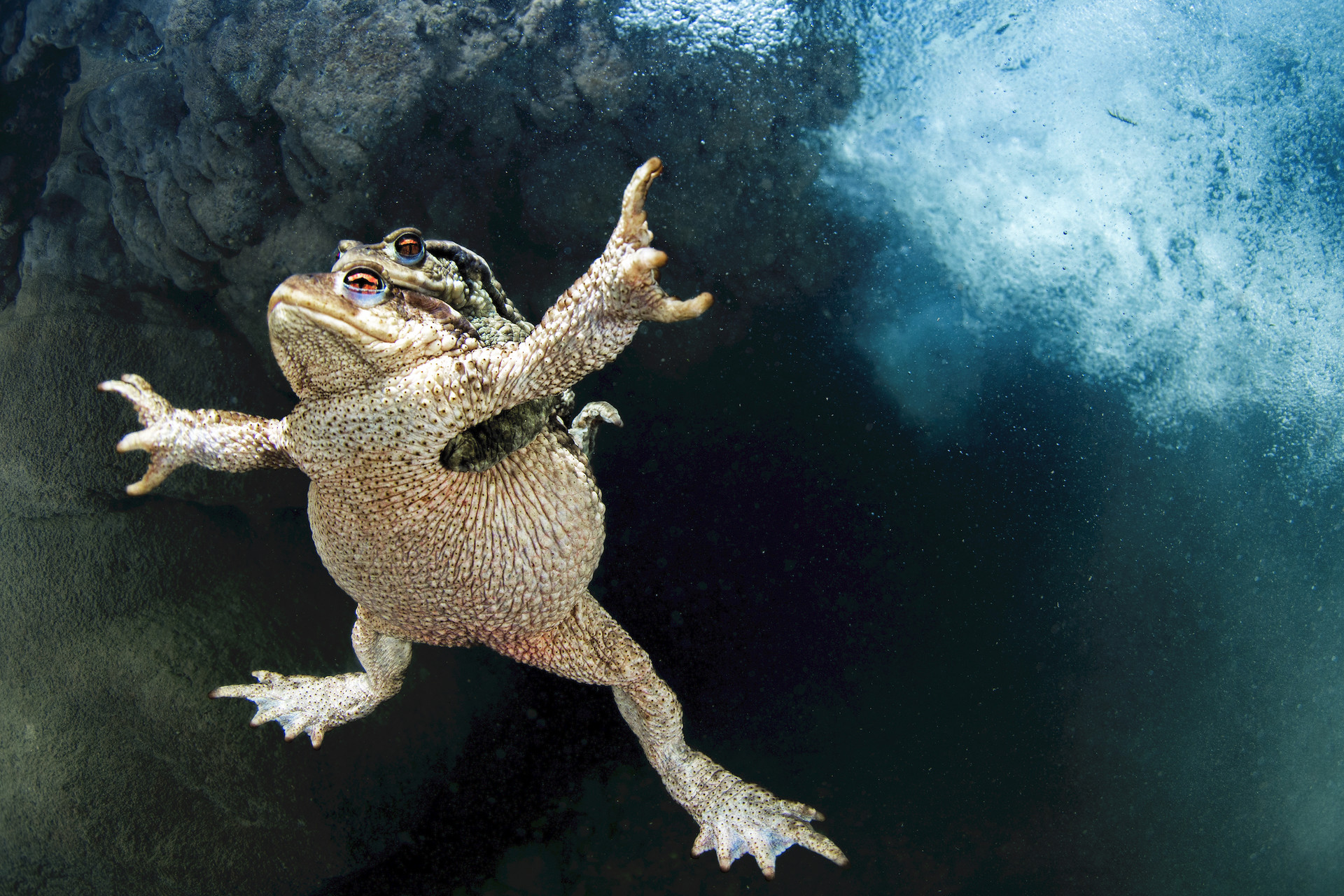
Beneath the turbulence of a small waterfall in France’s Lez River, a male common toad (Bufo bufo) holds on for dear life. Not his own life, though — the male is helping to ensure his species’ survival by fertilizing his female companion’s eggs as she lays them. Known as amplexus — Latin for “embrace” — this mating behavior is common among amphibians and other animals whose eggs must be fertilized externally. Males temporarily develop glands on their toes, known as nuptial pads, to help them grip the swollen abdomens of the females. Then, as the female releases thousands of eggs in pearly, gelatinous strands, the male coats them with sperm.
Scores of toads seeking partners for this ancient dance of procreation are killed each spring by motor vehicles. Fortunately, some European communities have built canals and even enlisted toad-shuttling volunteers to help them cross roads and reach their mates.
Guardians of the Giraffes by Ami Vitale
Photo Story Winner (one of six images)
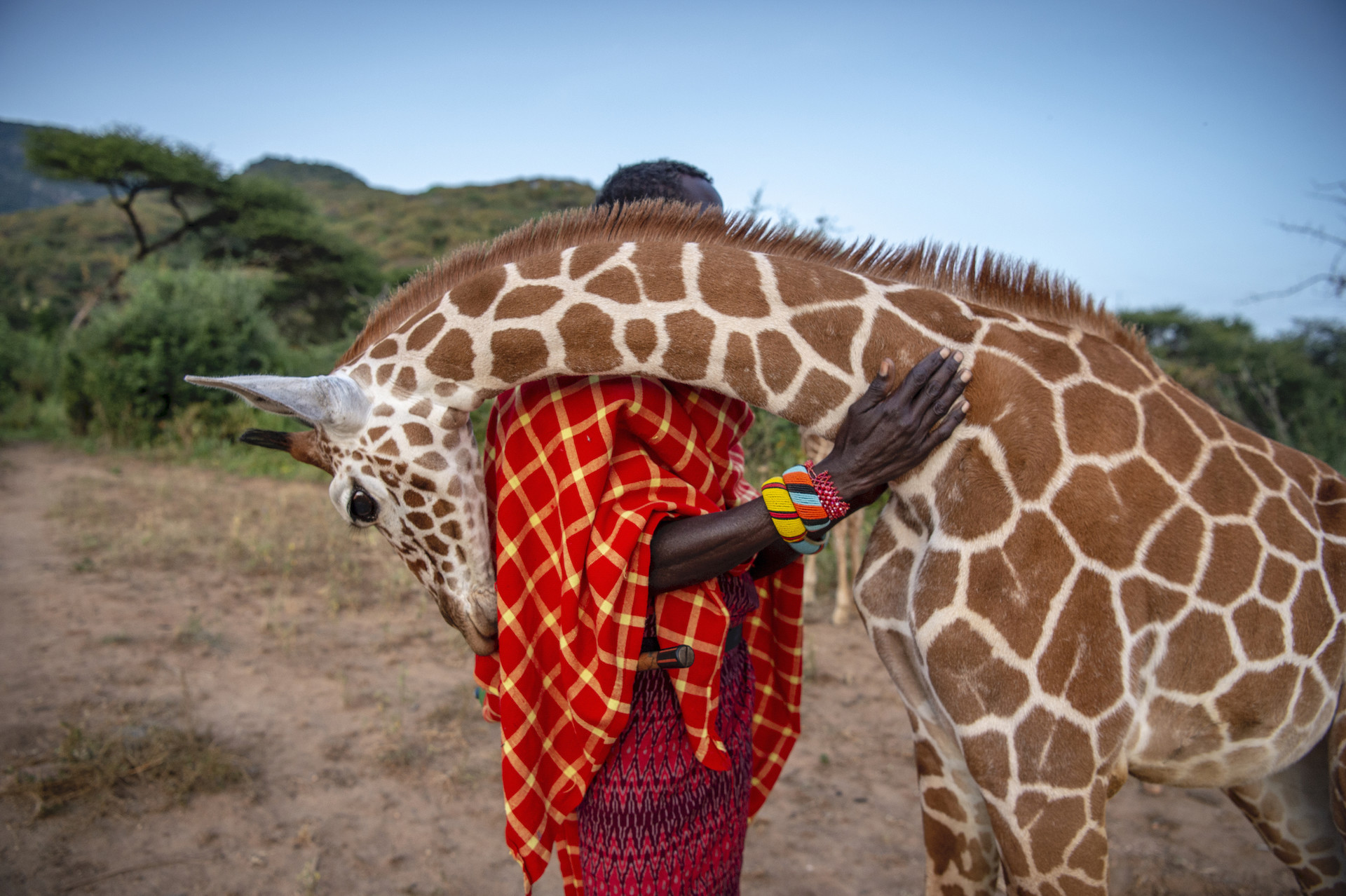
Too often, says Ami Vitale, nature photography excludes the humans whose lives are intertwined with the natural world. Her decadelong project documenting the bonds between Samburu people and wildlife in northern Kenya reverses this oversight, telling the story of how Samburu people became advocates for wild animals and their habitat.
For as long as Samburu people have grazed livestock, their livelihood has been seemingly at odds with the elephants, rhinos, giraffes, and other large mammals with whom they share their homeland. But as poachers decimated elephant (Mammalia proboscidea) populations in recent decades, Samburu herders realized their cattle were also suffering. Elephants promote grass growth by clearing brush and small trees, so as their numbers shrink, there’s less grass for cows to graze on. In response, the Samburu launched a sanctuary to rehabilitate orphaned elephants, along with other conservation programs that benefit threatened species like the reticulated giraffe (Giraffa camelopardalis reticulata), shown here. These efforts are changing long-standing Samburu attitudes toward wildlife, and show how the health of human and animal communities are connected. “Indigenous communities hold the key to saving Africa’s great animals,” says Vitale. “Where these communities are intact, poaching has dramatically decreased.”
Shelter in Place by Andy Parkinson
Grand Prize Winner
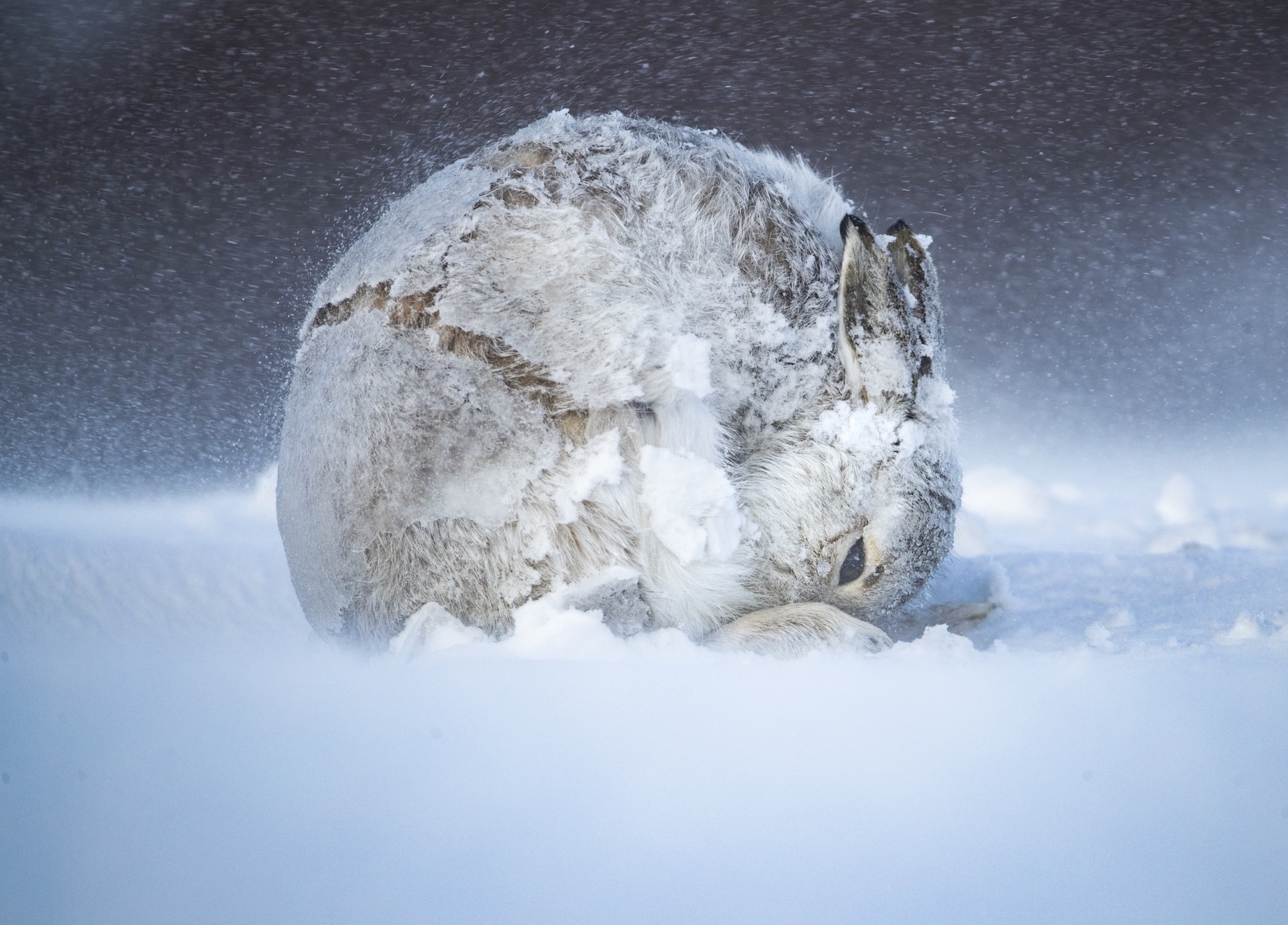
To get this intimate shot of a mountain hare (Lepus timidus) curled up against a Scottish winter storm, Andy Parkinson endured weeks of ferocious cold and wind that drove shards of ice into his face. Britain’s only native rabbit species, on the other hand, is utterly at home in these inhospitable conditions. Groups of 20 or more hares gather each winter to nibble heather on leeward slopes, where the snow tends to be shallower. Before resting, they jump away from their tracks to confuse predators. And while some ride out storms in burrows or depressions, this female created her own shelter, tucking herself into a ball to conserve heat and minimize exposure to the elements. It’s a nifty strategy for surviving the kind of weather that drives most creatures indoors or underground.
Despite their fortitude, mountain hares are Britain’s fastest-declining mammal, due to unregulated hunting and habitat loss. Parkinson hopes that calling attention to these remarkable rabbits will convince legislators to protect them.
Mushroom Magic by Agorastos Papatsanis
Landscapes, Waterscapes, & Flora Finalist
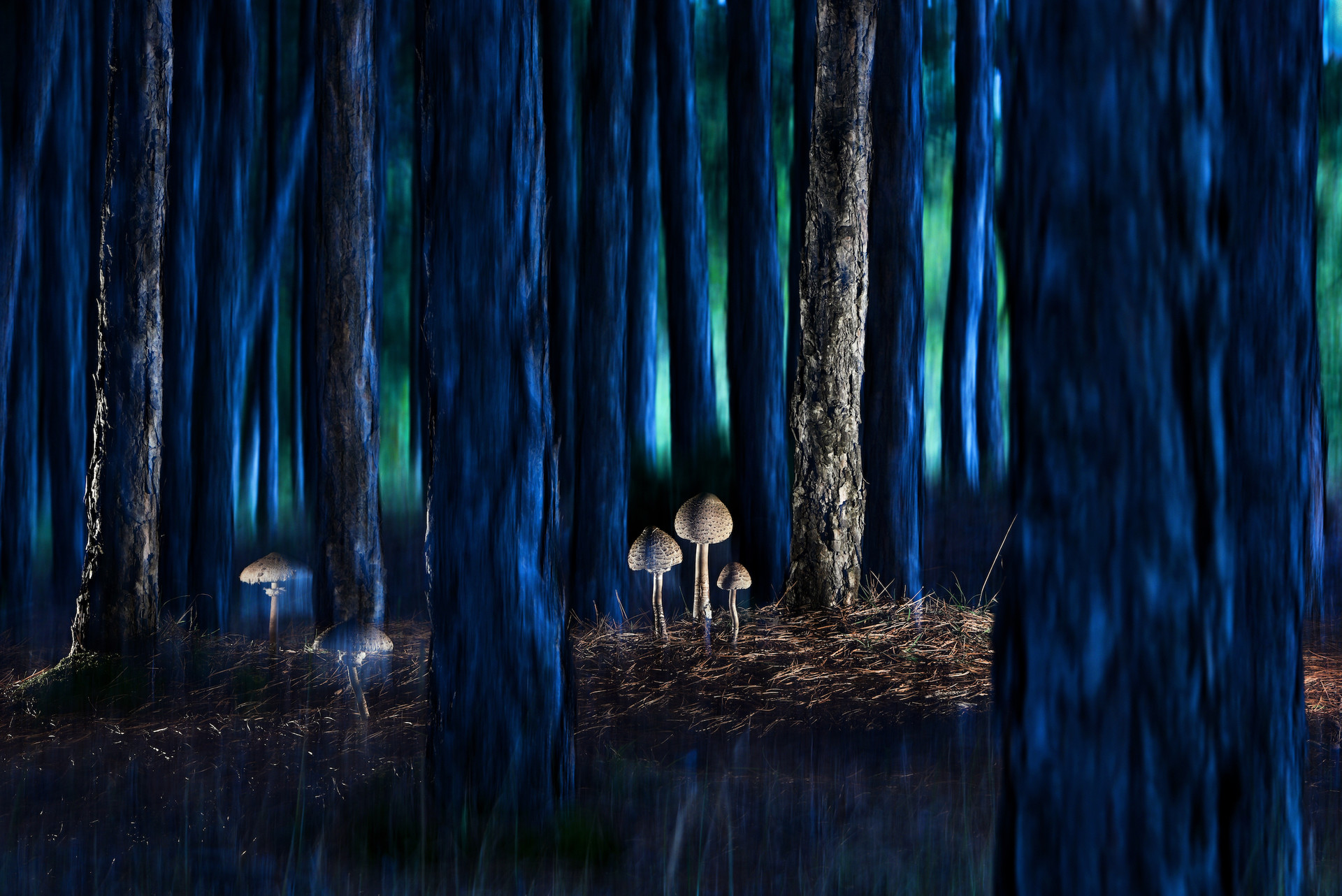
Despite the ethereal appearance of this photo, these edible mushrooms (Macrolepiota procera) won’t induce any hallucinations. But that doesn’t mean they aren’t magical. Indeed, the more we learn about mushrooms, the more magic they seem to harbor. From helping trees communicate to producing cancer-fighting metabolites, scientists have only begun to uncover the fantastic features of fungi.
At the root of many of these capabilities is the unique role that mushrooms play in the environment. As primary decomposers, mushrooms break down the organic matter of dead plants and animals. In return, the fungi become flush with essential nutrients and minerals, a number of which can confer antioxidant, antimicrobial, and anticancer benefits to humans. This same ability also makes mushrooms exceptional environmental remediators, ingesting the toxins and heavy metals that various industrial practices have leached into the soil.
Pond Skim by Piotr Naskrecki
Winged Life Winner
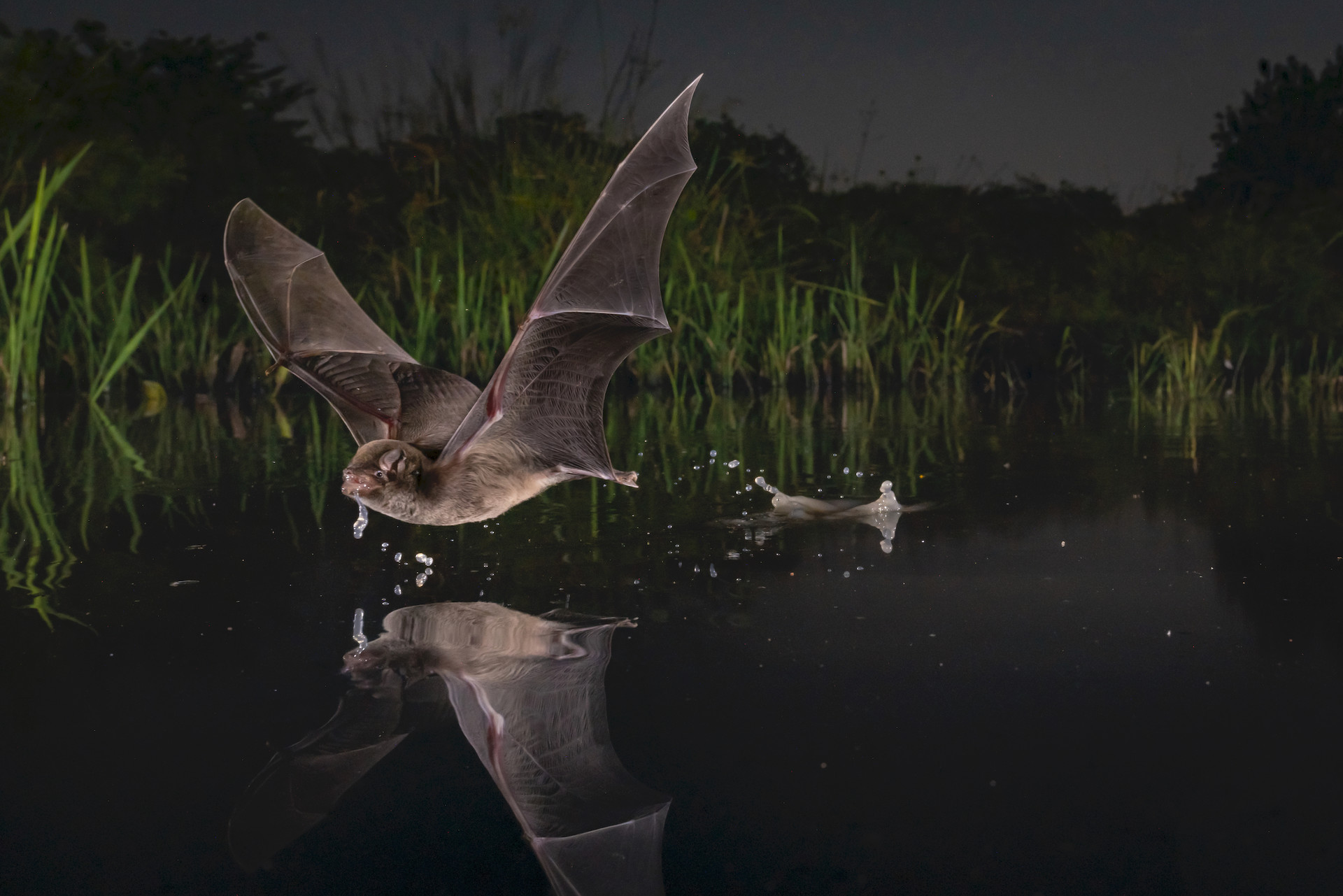
In Gorongosa National Park, at the southern tip of Africa’s Great Rift Valley, water breathes with the seasons. Lakes and rivers that overflow during the winter months are reduced to puddles and trickles come summer. For many species — including the Mozambique long-fingered bat (Miniopterus mossambicus) — the dry season means longer journeys for a much-needed sip of water.
As our planet warms and droughts increase in both frequency and intensity, the seasonal oases that bats depend on are drying up. Without adequate water, healthy bats begin to weaken, making them more susceptible to diseases that are already devastating populations around the world. Those that survive are sometimes forced to drink from human-made bodies of water — a boon for bats, but a potential risk for people who drink from those same water sources, since bats carry a host of zoonotic diseases. It’s often at these interspecies interfaces that killers like Ebola and the novel coronavirus emerge.
Speed and Strategy by Yi Liu
Terrestrial Wildlife Winner
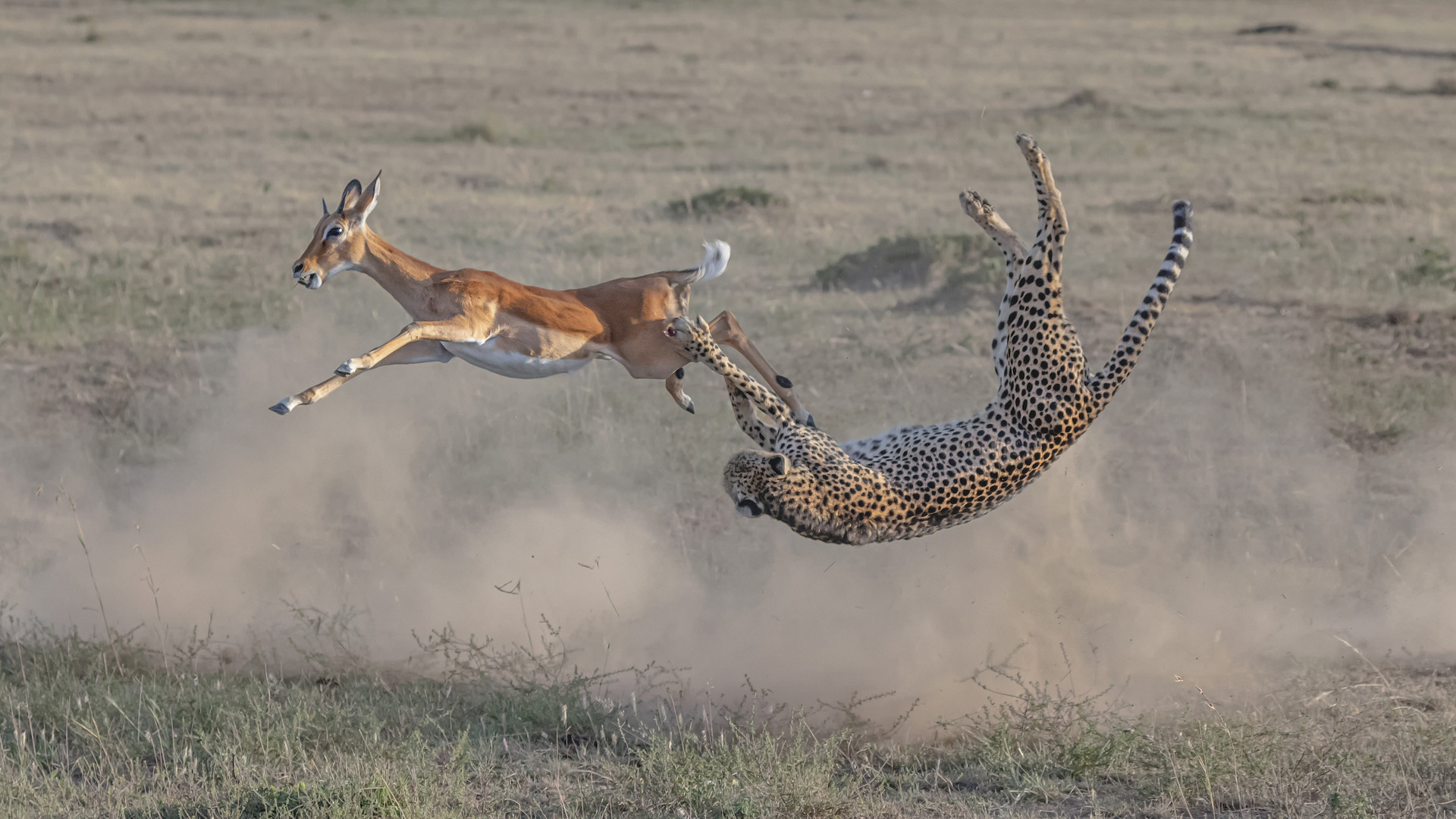
Although they’re the fastest land animals in the world, catching prey is no easy feat for a cheetah (Acinonyx jubatus). The mostly treeless terrain of the African savanna gives antelopes, impalas, and other ungulates ample time to spot approaching predators, and even a slight head start can be the difference between life and death. To avoid alerting their prey, cheetahs start out hunting low to the ground, where their spotted coat helps them blend into the terrain. When they get within 60 meters (200 feet) of their target, cheetahs accelerate at a blistering pace, reaching 95 kilometers (60 miles) per hour in a matter of seconds. But the feline predators still have to account for the speed of their prey — in this case an impala (Aepyceros melampus), which can zigzag at upward of 80 kilometers (50 miles) per hour. To close the gap, this cheetah tripped its quarry as it attempted to escape, proving that sometimes, strategy is just as important as speed.
The Cost of Cats by Jak Wonderly
Human/Nature Winner
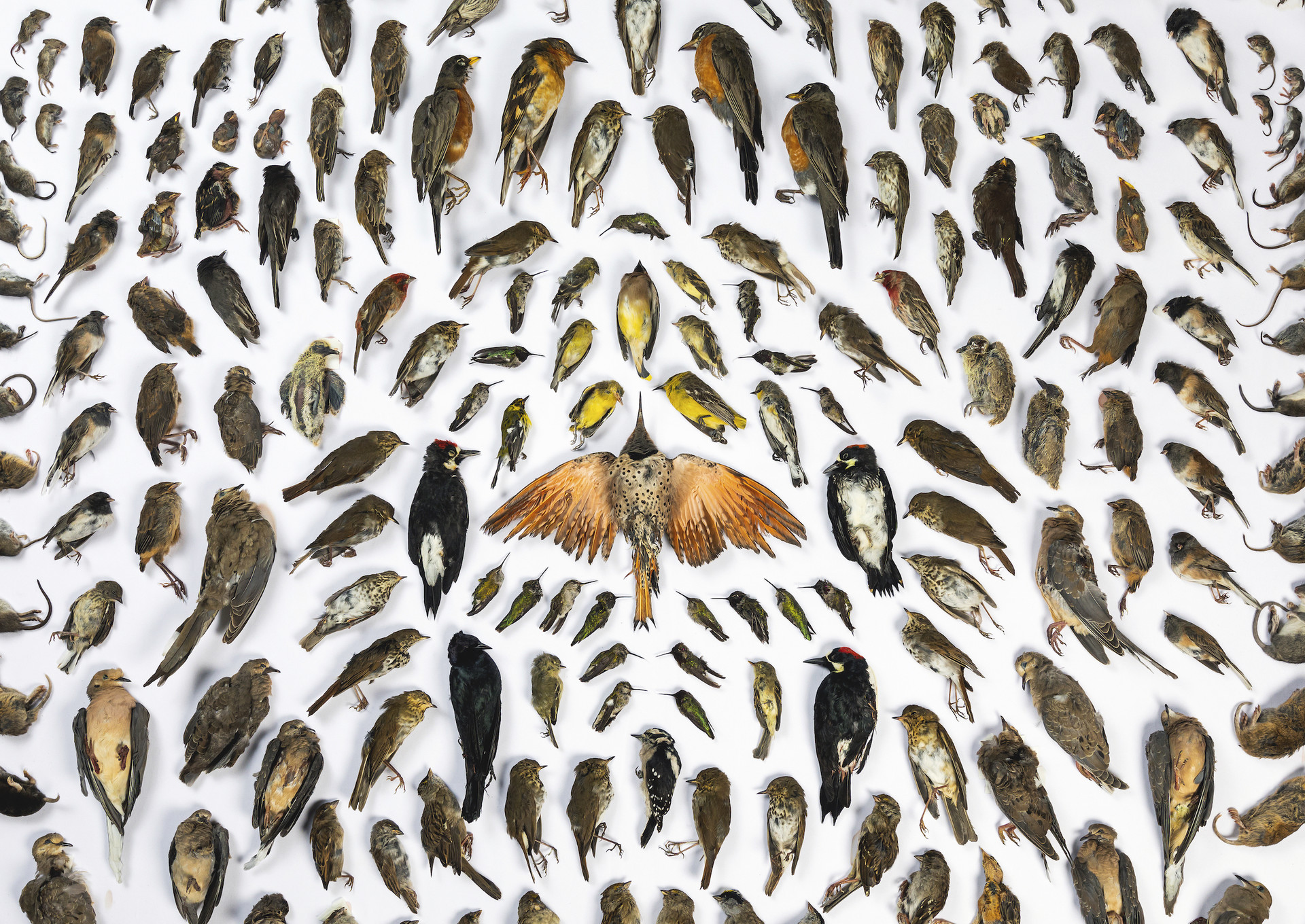
Every year, the staff at WildCare, a California animal rescue organization, is tasked with rehabilitating hundreds of birds and other wild animals mauled by outdoor house cats. The 200 pictured here did not survive. “I wanted to create an image to show some of the impacts our pets have on the wildlife around our homes,” says Jak Wonderly.
One of those impacts is a world with less birdsong. In the United States alone, more than 2 billion birds are killed by cats annually. Other nations, including Australia and New Zealand, have tried to protect native wildlife by imposing restrictions on cat owners, such as “cat curfews” that require cats to be indoors after dark. But because such measures are unlikely to gain traction in North America, Wonderly took this devastating photo. By illustrating the suffering that free-roaming house cats cause, he hopes to spark discussion about alternative solutions for reducing the death toll caused by our pets.
This story comes from bioGraphic, an online magazine published by San Francisco’s California Academy of Sciences.
